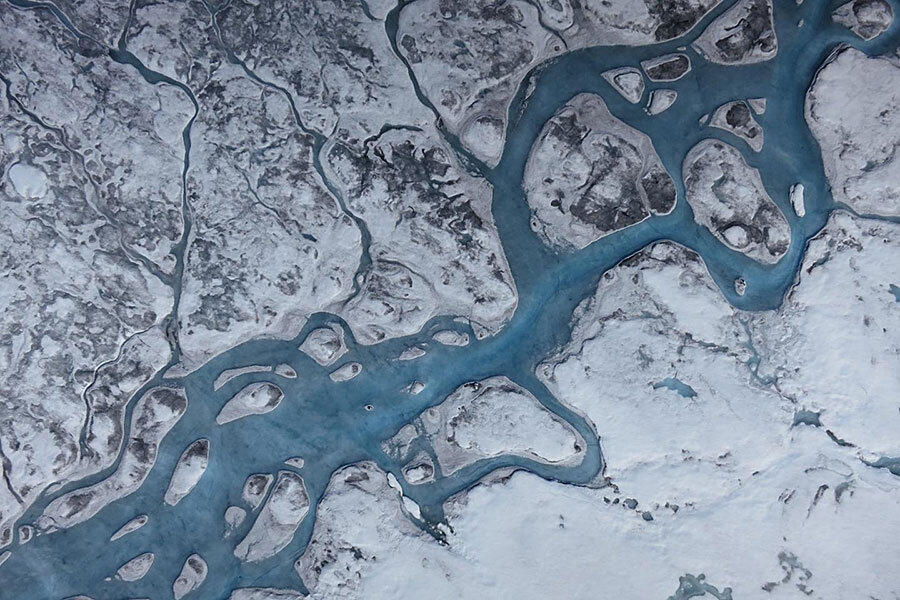Why is Greenland's ice sheet getting 'darker'?
Loading...
Greenland’s ice sheet has been darkening for the past two decades, and new research delves into the processes behind this phenomenon.
The study, published Thursday in The Cryosphere, a journal of the European Geosciences Union, considers the processes by which an ice sheet loses its ability to reflect sunlight – its albedo – terming this diminishing capability as “darkening.”
Researchers found positive feedback loops, whereby the more an ice sheet melts, the quicker that melting process becomes, which could have significant implications for projections of the ice sheet’s future contributions to sea level rise.
“We knew that these processes had been happening,” says lead author Marco Tedesco, a professor at Columbia University's Lamont-Doherty Earth Observatory and adjunct scientist at NASA Goddard Institute of Space Studies, in a telephone interview with The Christian Science Monitor. “What’s new is the acceleration of the darkening, which started in 1996.”
The research looked at two factors that affect the rate of melting: impurities in the ice, and the size of grains in the snowpack.
The first of these is often visible to the human eye, with higher concentrations of impurities literally darkening the appearance of the snow.
And, as darker substances tend to absorb more energy from the sun, more impurities will mean the ice melts more quickly.
“Then there are things that happen that are invisible to our eyes, which make the snow ‘darker’ – not dirtier, but more absorbent of energy from the sun,” Dr. Tedesco tells the Monitor. “The grains get bigger, for example, which decreases the albedo, but we don’t see this effect because it takes place on the infra-red.”
This second process, whereby the grains in the snowpack increase in size, happens as a consequence of melting and refreezing, the meltwater acting as a glue, binding grains together.
The more it happens, the bigger the grains become, and the less reflective is the surface of the ice sheet, which in turn leads to faster melting – one aspect of the positive feedback loop.
“In a snowpack with larger grains, it might look much cleaner to our eyes, but that clean snow pack is much 'darker' than a dirty snow pack,” Tedesco explains.
With regard to the impurities, more melting also results in faster melting: as the ice sheet melts, water runs off, but impurities will often stay. And, as the top layers melt, impurities lower down become exposed, gradually increasing their concentration at the surface.
“So, you have a combined effect of increased dirt due to melting and increased grain size, also due to melting,” says Tedesco. “It is a positive feedback process that amplifies the melting effect.”
And although the effects of increasing grain size are invisible to the human eye, the same is not true for satellite instruments.
So it was that Tedesco and his team were able to analyze satellite data stretching back decades, beginning in 1981, to draw conclusions about the changes in the albedo of the Greenland ice sheet.
They found little change in the first decade, but starting in 1996, the data indicated that, due to “darkening,” the ice sheet became about 2 percent more absorbent of solar radiation each decade.
Taking this fresh insight, the scientists ran some computer simulations, which produced a predicted drop in albedo of the Greenland ice sheet of up to eight percent over the course of the current century.
“It’s the first time we’ve really tried to explain the processes behind darkening, and it’s important because a darker ice sheet can melt in a much faster way,” says Tedesco. “In turn, this understanding is significant because if you miss it, it may have big implications on the accuracy of future projections.”






